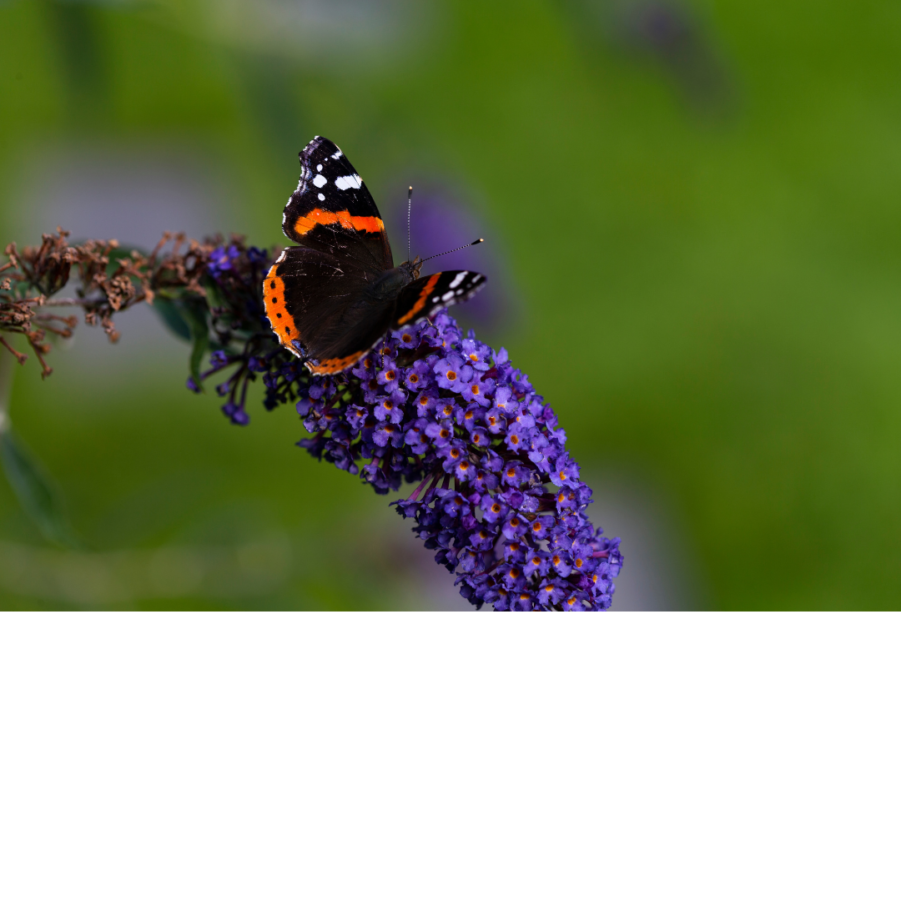Every year, more and more homeowners are trying to garden for wildlife. After all, it’s really pleasant to have certain kinds of wildlife in your yard. From hummingbirds and songbirds to bees and other beneficial garden bugs, nature can bring wonderful company to your outdoor spaces. One popular garden plant for bringing in butterflies is butterfly bush. After all, it’s in the name! But is butterfly bush actually good for attracting butterflies? Does it help support insects in your yard? Let’s find out in this Naturalist Answers post.
Getting to know butterfly bush
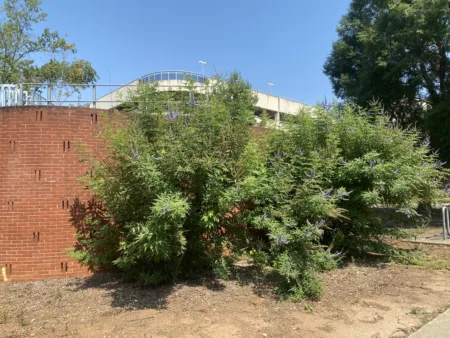
Even if you haven’t heard the name, if you live in Europe, the U.K., or North America you have probably seen this plant before. Butterfly bush (Buddleja davidii) if an attractive flowering shrub in the figwort family Scrophulariaceae. This fast-growing plant can handle most climates that don’t have severe freezes, and can quickly reach heights of up to 16 feet (5m)! Native to central China and Japan, Buddleja has been widely introduced and cultivated as an ornamental elsewhere in the world. Gardeners especially love it because it:
- Grows quickly
- Is hardy and can do great even in poor soils
- Produces TONS of pretty, sweet-smelling flowers
- Doesn’t require much care
Does butterfly bush attract butterflies?
Absolutely! Buddleja got its name because its many blossoms are extremely attractive to pollinators. Indeed, at certain times of year, I have seen these plants absolutely covered in bees and butterflies. In particular, they aren’t stingy with their nectar, and give out lots to their winged visitors. This can really draw a crowd! Some close friends of mine in New England recently purchased a butterfly bush for their garden, and they have already seen plenty of seasonal pollinators come through.
Is butterfly bush good for butterflies?
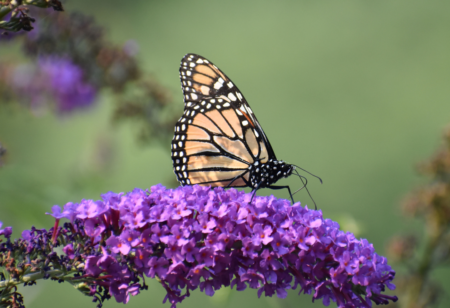
This question is a bit more complicated. You may find some sources arguing that Buddleja is bad for butterflies, and that is at least partly true. One of the major wildlife gardening myths is that this plant offers lots of sugary nectar, but little nutritional value to pollinators. However, studies indicate that its nutritional value, although lower, is not problematic for butterflies.
In other words, Buddleja is not just “junk food” for nectar-feeders. Nonetheless, there are other aspects of this plant that are problematic. Here are two of the major ones:
Butterfly bush doesn’t provide food for butterfly larvae
Importantly, butterflies don’t eat nectar for their entire life cycle. In fact, for the majority of their lives, most lepidopterans like moths and butterflies are larvae called caterpillars or inchworms. During this time, they are (with a few gruesome exceptions) eating tons of plant material to grow and molt into their adult form.
This means plants that really help butterflies don’t just provide nectar, they also provide a good food source for caterpillars. Butterfly bush, though, doesn’t provide any food whatsoever for native butterflies. More specifically, no North American butterfly or moth species can lay its eggs on butterfly bush and have those larvae feed and survive. In butterfly nerd terms, Buddleja is not a “food plant”.
That doesn’t sound so bad on its, own, but that’s only half of the problem with this plant.
Butterfly bush is an invasive species in many areas
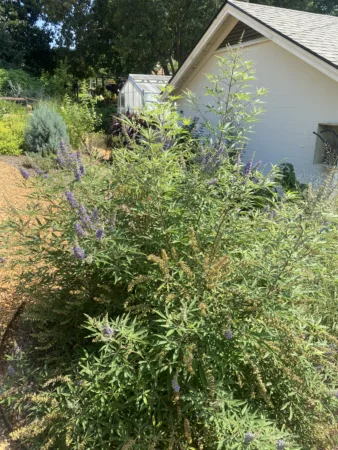
This may come as a surprise to many people. Unfortunately, many of the aspects that make Buddleja such a good garden plant also make it have severe impacts on surrounding ecosystems. This earns it the classification of an invasive species. To get the low-down on invasive species, how they work, and what makes them bad, be sure to check out my post on what makes invasive species a problem.
Butterfly bush’s many flowers and frequent pollinator visits mean that it produces tons of viable seeds very quickly. These seeds get dispersed by the wind and can spread rapidly; preventing their spread can be really hard! Because it’s such a hardy plant, butterfly bush can grow well in disturbed areas, and it can rapidly take over places that get cleared by construction or other disturbances.
Buddleja grows and spreads aggressively, so once it establishes itself in a new location, it can quicky crowd out native flowers upon which butterflies and other native insects depend. This is especially problematic, since butterfly bush will eliminate food plants that butterflies need to reproduce.
The bottom line
So, does butterfly bush attractive butterflies? Yup, it often brings in quite a few. Is butterfly bush good for butterflies? It can provide them with a great gas-n-go option, but in the long run it cannot replace the native food plants that they need to survive and reproduce. Since it is an invasive species, it can also harm your surrounding ecosystems, and will crowd out wildlife-friendly plants that would be more beneficial to your garden ecosystem.
I love butterfly bush! What can I do to make it less harmful?

If you want to keep your butterfly bush and reduce its impact on the environment, there are some steps that you can take:
- Buy sterile breeds of Buddleja that won’t reproduce and spread
- Mulch or otherwise cover the area around your butterfly bush to prevent it from growing seedlings. Maintaining a good leaf litter in your yard helps with this!
- Cut off and dispose of flowers once they are done blooming so that they don’t produce and spread seeds.
What are some alternatives to planting butterfly bush?
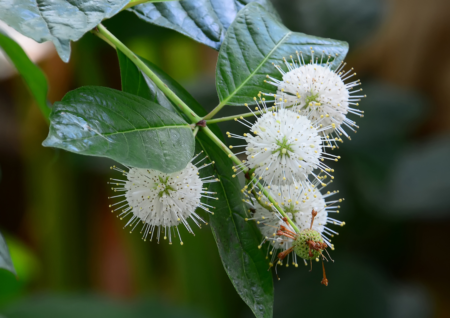
While butterflies can find nectar on many kinds of flower, they are much more selective about food plants. Because of this, it’s always a good idea to look up what butterflies live in your area, and look at the plant families that they eat. My guide to taxonomy can help you figure out the categories of plants that different butterflies like. If you have a particular type of butterfly you’re after, this can also help you find the food plant that will attract them.
For example, many skippers (family Hesperidae) like grasses, while swallowtails (Papilionidae) like fennel, dill, celery, and related plants. If you want to attract monarchs, don’t miss out on beautiful native milkweeds!
Here are some other North American plants you might consider:
- Sassafras
- Buttonbush (Cephalanthus occidentalis)
- Mountain mint and Bergamot (Monarda sp.)
- Catmint or catnip (Nepeta sp.)
- Pussy willow (Salix sp.)
- Mountain laurel (Kalmia latifolia)
- Joe-pye weed (Eutrochium)

- American beautyberry (Callicarpa americana)
- Sweet pepperbush (Clethra alnifolia)
- Of course, milkweeds!
Thanks for reading!
Have you come across this plant in your garden or neighborhood? Do you have a favorite local butterfly plant? Share with us in the comments! Please reach out via the Contact Page if you have additional questions or request for posts on Gulo in Nature, and share & follow us on Social Media!

